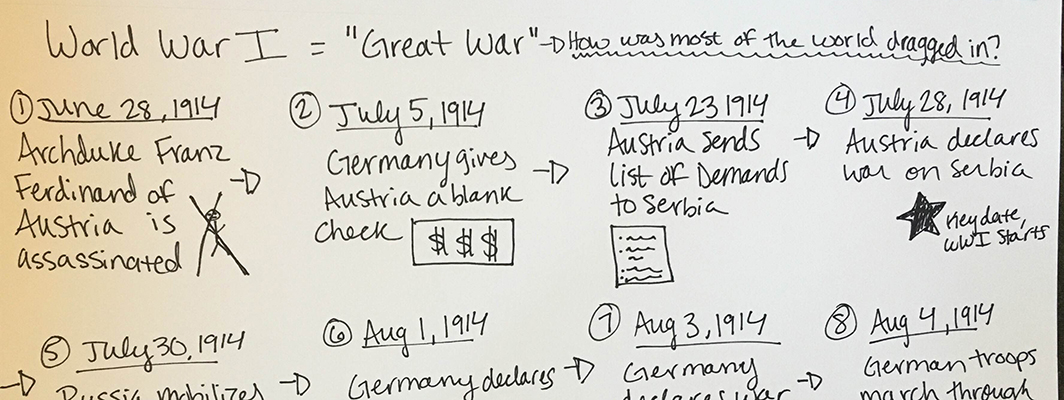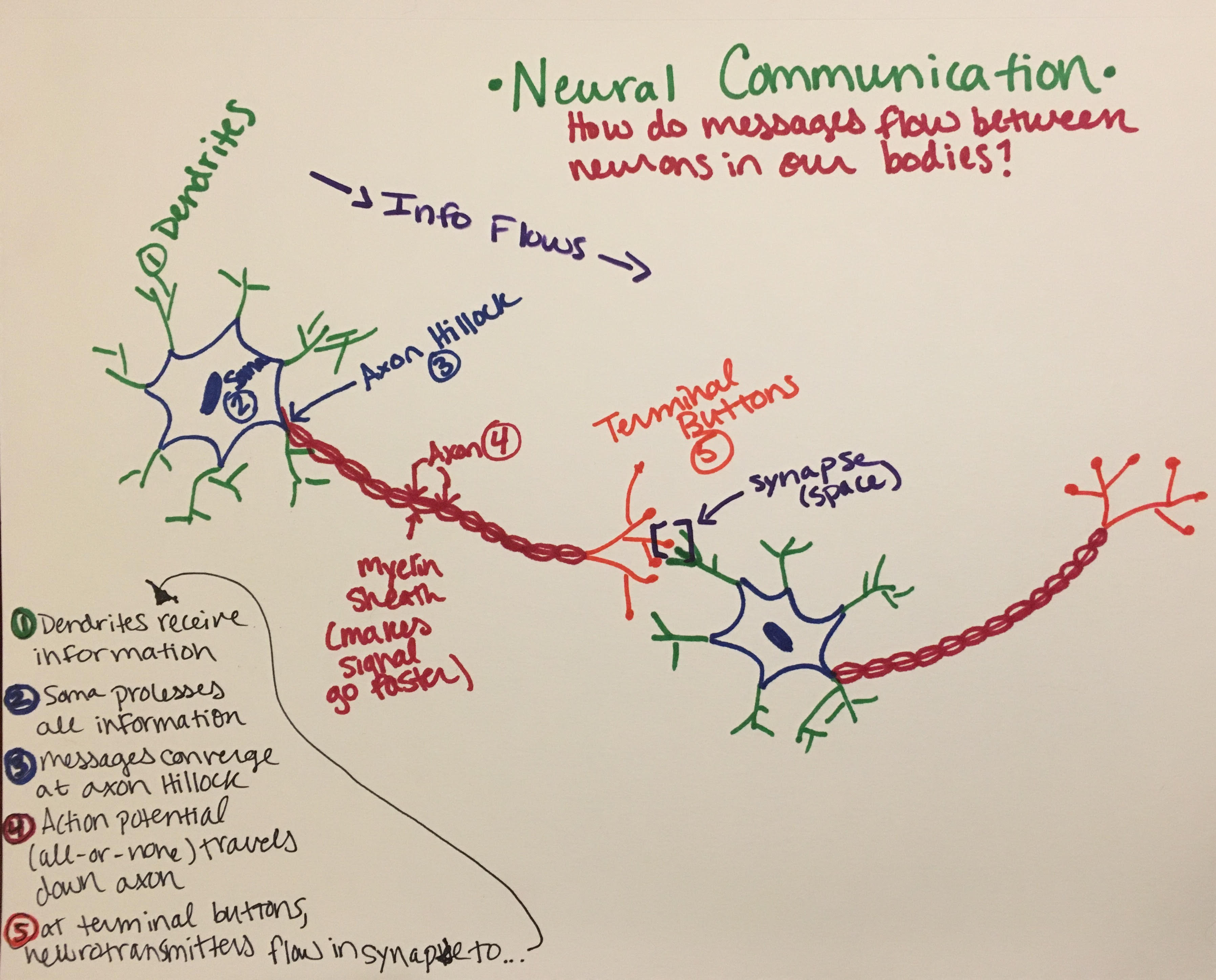
This article originally appeared on learningscientists.org. Read the original version here.
This is the final post in a series of six posts designed to help students learn how to study effectively. You can find the other five here:
Today’s post is about dual coding – a method of studying where students combine visuals and words.
Dual coding is the process of combining verbal materials with visual materials. There are many ways to visually represent material, such as with infographics, timelines, cartoon strips, diagrams, and graphic organizers.
When you have the same information in two formats – words and visuals – it gives you two ways of remembering the information later on. Combining these visuals with words is an effective way to study (1).
When you are looking over your class materials, find visuals that go along with the information and compare the visuals directly to the words. Ask yourself, how are the words describing what is in the visuals? How do the visuals represent what is described in the text?

Picture from Pixabay.com
Now, look at only the visuals and explain what they mean in your own words. Then, take the words from your class materials and draw your own visuals to go along with them!

Certain types of visuals work very well with certain types of materials. For example, a timeline may work well for remembering history, and a diagram may work very well with biology. But, get creative while drawing the visuals. You do not need to reproduce the exact visuals you see in your class materials. Just make sure the visual depicts what you are seeing in words from your class materials.

After you have compared visuals and words describing the idea you are trying to learn, it’s time to start retrieving the information on your own. Work your way up to the point where you can put away your class materials and both write out the ideas in words and draw pictures, diagrams, or other graphics to go along with them. Check out this post for more on retrieval practice.
When we discuss verbal and visual materials, it does sound like we could be referring to learning styles. However, it is important to remember that a great deal of research has shown that assessing your learning style and then matching your study to that “style” is not useful, and does not improve learning (2). (For more, read this piece.) So, remember, regardless of any “learning style” you may or may not possess, or think you possess, matching the specific way you are studying to this style will not improve learning! You may have a preference for verbal materials or visual materials, but that does not mean that you learn better with those types of materials. Instead, students learn best when they combine visual materials (like pictures or diagrams) with verbal materials (like words from a textbook). So, even if you have a preference for one type of material or another, it is important to dual code and use both!
This article originally appeared on learningscientists.org. Read the original version here.
References
(1) Meyer, R. E., & Anderson, R. B. (1992). The instructive animation: Helping students build connections between words and pictures in multimedia learning. Journal of Educational Psychology, 4, 444-452.
(2) Pashler, H., McDaniel, M., Rohrer, D., & Bjork, R. (2008). Learning styles concepts and evidence. Psychological Science in the Public Interest, 9, 105-119.